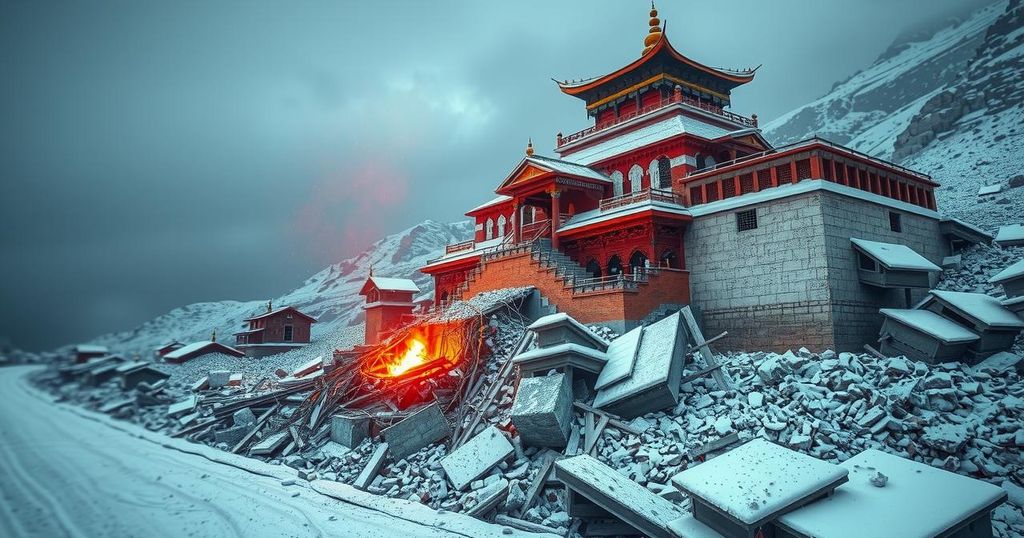A devastating earthquake in Tibet on January 7 killed at least 126 people and injured 188. The 6.8-magnitude quake damaged over 3,600 homes, with ongoing rescue efforts facing numerous challenges due to cold temperatures and aftershocks. The response includes more than 1,800 rescue workers and 1,600 soldiers to assist affected individuals, highlighting the urgent need for temporary shelter and aid amidst the ongoing political complexities in the region.
On January 7, a significant earthquake of 6.8 magnitude devastated Tibet, resulting in at least 126 fatalities and injuring 188 individuals. The quake struck the Tingri district, situated in the Himalayan foothills approximately 80 kilometers north of Mount Everest, with the aftershocks also being felt across neighboring countries such as Nepal, Bhutan, and India. The impact of the earthquake led to the destruction of over 3,600 homes in the Shigatse prefecture, leaving many residents homeless and in dire need of assistance.
Initial rescue operations successfully extracted more than 400 individuals from the debris; however, the exact number of those missing remains uncertain. Rescue efforts have faced significant challenges due to over 500 aftershocks and harsh winter conditions, with temperatures plummeting to -18°C during the night. Eyewitness accounts describe the destructive power of the earthquake, stating that homes were “shattering” under its intensity. Authorities are actively seeking temporary shelters and heating solutions for the affected populace.
In response to the crisis, the Chinese government dispatched over 1,800 rescue workers and an additional 1,600 soldiers to aid in the relief efforts. It is crucial to note that Tibet, an autonomous region in southwestern China, has a complex political history, having regained its autonomy in 1965 after being absorbed by China in 1951. The area is often at the center of discussions concerning cultural autonomy and political repression, adding a sensitive dimension to governmental responses to disasters in the region.
The earthquake in Tibet on January 7 has brought renewed attention to the region, which is characterized by its unique political and cultural situation. Tibet gained independence from China in 1912 but was later re-incorporated in 1951, leading to ongoing tensions regarding autonomy and cultural rights. Claims of religious repression and the destruction of Tibetan culture by the Chinese government have been widely reported, creating a backdrop of sensitivity whenever disasters occur. Offering humanitarian assistance in such contexts is not merely a logistical challenge but also a politically charged initiative, igniting discourse on welfare and governance in the region.
In conclusion, the earthquake in Tibet on January 7 has resulted in a substantial loss of life and widespread destruction, with ongoing rescue efforts complicated by severe aftershocks and winter conditions. As the region grapples with the aftermath of this catastrophe, the situation sheds light on broader socio-political issues involving governance in Tibet. It emphasizes the urgent need for effective disaster response mechanisms while considering the complex interrelations of culture and politics in the area.
Original Source: babel.ua






